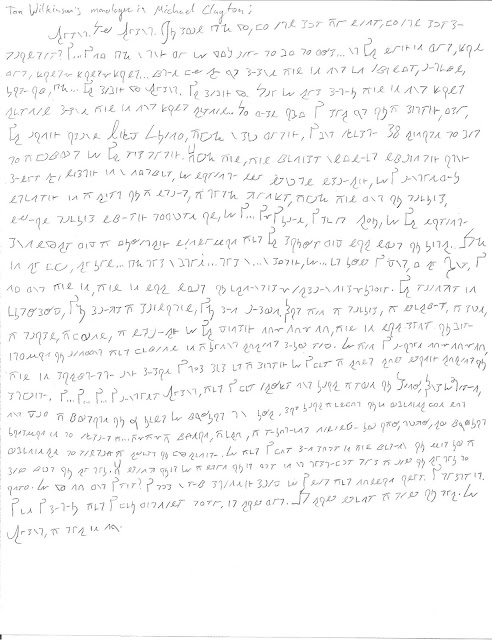One of the most persistent tropes in horror is the haunted house and dang if I don't need to tell you that. From the countless movies, books, "true stories", amusement park attractions and others you'd think that half the houses on your block will become haunted with little more than one measly murder-suicide. As horror develops, as well as our psychological grasp on what horrifies us, the haunted house subgenre transforms along with it, adding new monsters, rooms and unknown threats, and while many of them are tedious there are a number of gems in the film canon, from Jean Epstein's The Fall of the House of Usher and James Whale's The Old Dark House to mid-century classics such as The Innocents, The Haunting and The Legend of Hell House and more recent successes such as Silent House and Crimson Peak. There are plenty of literary haunted houses to choose from as well, such as The Haunting's source book The Haunting of Hill House and The Shining. I'll admit that haunted house stories aren't my favorite subgenre, not that I don't love a number of movies that take place in them (and even more if you count how many non-haunted houses still confine protagonists in horror stories), but they often carry over a number of irritating problems and inconsistencies from ghost stories, the most primordial and yet most frustrating of horror genres. The best haunted house stories are ones that shake things up, such as Mark Danielewski's House of Leaves, and during the horror novel boom of the 1970's and '80's the genre was defined by two major successes, The Shining and Robert Marasco's Burnt Offerings, among others. One book sticks in my mind particularly when thinking about this period, and although it slipped through the cracks a bit at the time a recent reprinting by the excellent Valancourt Books may give it a chance to be reappraised. Published in 1980, The Well was the first novel of Pacific Northwest-based author Jack Cady, a longtime professor at PLU, and is one of the most creative and unusual haunted house stories I've ever seen, it's wonderful setup diving head-first into the idea that the road to hell is paved with good intentions.
John Tracker is a man who has abandoned his own family, year before fleeing his ancestral home and the insanity of his elders, all of whom share the same mad quest: building the house with traps for the Devil. In an effort to ready the house to be torn down to build a new highway, Tracker returns with his girlfriend in tow to see what remains of his family after a 20 year absence. The house is crammed with traps and illusions, so much so that nobody unfamiliar with the layout can walk through without being killed, and since he's been gone new traps have come into being; this isn't helped by the presence of his grandmother Vera and the possibility his father and grandfather are maintaining and building traps. However much Tracker thinks he knows the house it continues to change and baffle, revealing threats that are more than mechanical and the extent to how well the designs have worked - just not in the way anybody expected.
The Well is a great example of a book that can't easily be filmed, but not for a lack of visual content. I'd wait in line overnight to see how the Tracker house would be depicted on screen, and considering how expensive a movie version of it would have to be the production values would most certainly be very high. The problem with filming it is more that the true horrors come from internal struggles, from secrets and family histories, the collision of human ambition and otherworldly justice. The house is more than the family home - it's a vortex of evil, accumulating every sin the Trackers have done to the world and twisting time and space to reflect its judgment. Each chapter begins with a chronicle of the life of one of Tracker's ancestors, each one miniature jewels of storytelling in a mode that movies can never replicate. As the climax draws nearer and Tracker's mission becomes direr the reader can feel an increasing weight of history and familial responsibility on his shoulders. We live in strange times having lived entirely in an industrial nation - family bonds are probably weaker now than ever before and fewer young people are expected to carry on the traditions and work of their parents than in previous generations. The Well was written during this shift and Cady was more than aware of where American society came from and where it was going. The Tracker house is most certainly haunted and among the most byzantine and lethal of all haunted houses, but the resolution to the journey within it is a spiritual and philosophical one rather than a fistfight with ghosts. I loved it, not just for its story and imagery but also for Cady's mature, silken prose, richly colored without being showy and proving that realist authors can have great love for poetry and metaphor. It also helps that my copy is a first edition hardcover, complete with its dust jacket, that I got at a Goodwill for $3, and upon opening it I saw that it was signed by the author. Perhaps time and space can be warped to deliver a message, in this case that I'm the exact kind of person to really love this book. Step inside and be watch your step.
~PNK






































